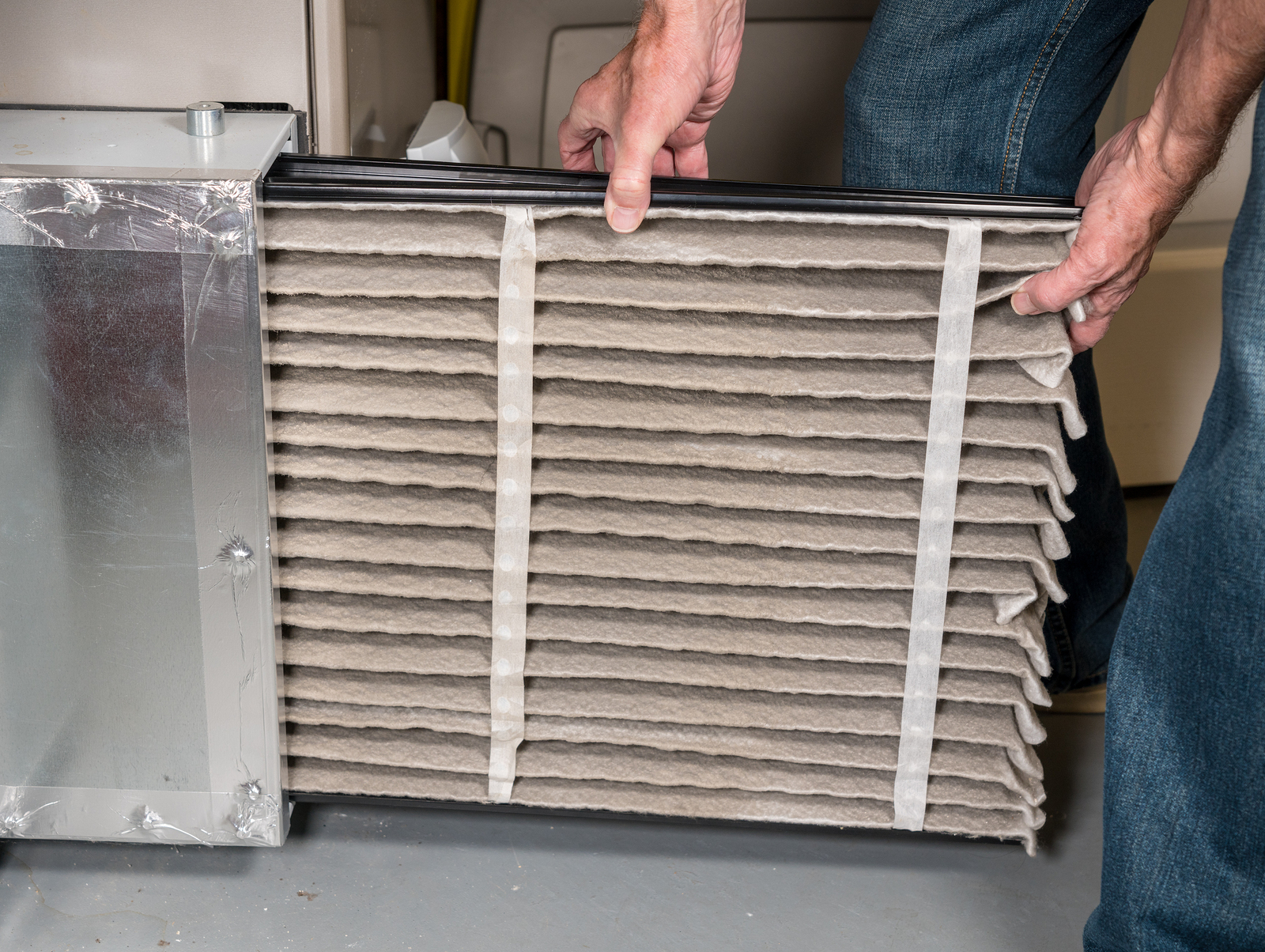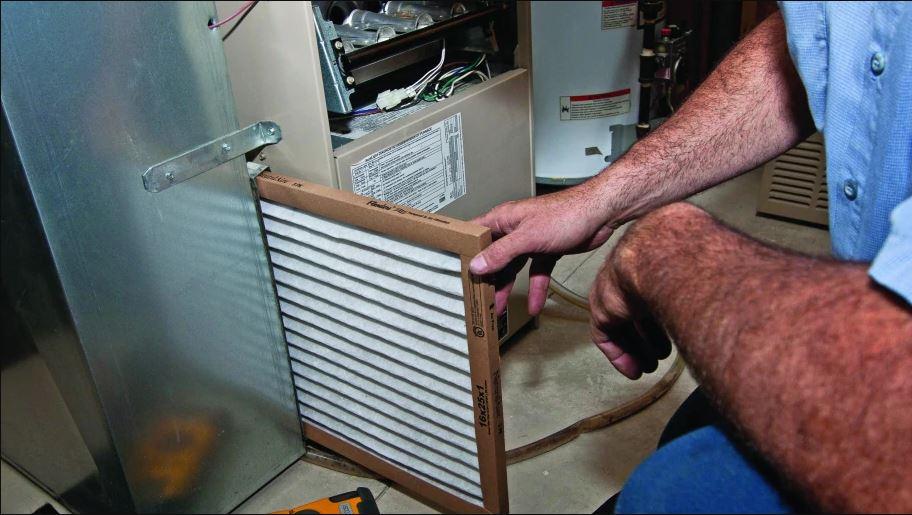How To Change An Air Filter In A Furnace

Changing Your Furnace Air Filter: A Homeowner's Guide
Maintaining your furnace is crucial for efficient heating and good indoor air quality. One of the simplest, yet most important tasks is changing the air filter. This guide provides a step-by-step walkthrough for homeowners and DIY enthusiasts.
Tools and Materials You'll Need
- New air filter (correct size)
- Screwdriver (if needed to access the filter compartment)
- Flashlight or headlamp
- Vacuum cleaner (optional)
- Gloves (optional)
Step-by-Step Instructions
- Turn off the furnace. Locate the power switch, usually on or near the furnace. It might be a simple on/off switch or a breaker switch. Ensure it's in the "off" position. Safety first!
- Locate the air filter compartment. The air filter is typically located in one of two places:
- In a slot on the side of the furnace itself.
- Behind a return air grille on the wall or ceiling.
- Open the filter compartment. This may involve:
- Sliding open a panel.
- Removing screws with your screwdriver.
- Releasing clips.
- Remove the old air filter. Note the direction of airflow indicated by an arrow on the filter. This is crucial for installing the new filter correctly. Handle the dirty filter carefully to avoid spreading dust and debris.
- Inspect the filter compartment. Use your flashlight to examine the compartment for dust and debris. If necessary, use a vacuum cleaner to gently clean the area.
- Install the new air filter. Align the arrow on the new filter with the direction of airflow you noted earlier. Slide the filter into the compartment.
- Close the filter compartment. Secure the panel, tighten the screws, or re-engage the clips. Ensure the compartment is properly sealed.
- Turn the furnace back on. Flip the power switch back to the "on" position.
Choosing the Right Air Filter
Selecting the correct air filter is important for both air quality and furnace efficiency. Filters are rated using the Minimum Efficiency Reporting Value (MERV).
- MERV 1-4: Basic filters. Capture large particles like dust and pollen.
- MERV 5-8: Standard filters. Capture more fine particles.
- MERV 9-12: Advanced filters. Capture even smaller particles like mold spores and pet dander.
- MERV 13-16: High-efficiency filters. Capture the smallest particles like bacteria and viruses. Use with caution, as they can restrict airflow in some systems.
Check your furnace manufacturer's recommendations for the appropriate MERV rating. Using a filter with too high of a MERV rating can restrict airflow, causing your furnace to work harder and potentially overheat. Consider your family's needs (allergies, pets) when choosing a filter.
How Often Should You Change Your Air Filter?
The frequency of air filter changes depends on several factors:
- Type of filter: Thicker, pleated filters generally last longer than thin, fiberglass filters.
- Presence of pets: Pets shed dander, which can clog filters quickly.
- Occupant allergies: Those with allergies may benefit from more frequent filter changes.
- Air quality: Dusty environments require more frequent changes.
As a general guideline:
- Basic filters (MERV 1-4): Every 1-3 months.
- Standard filters (MERV 5-8): Every 3-6 months.
- Advanced filters (MERV 9-12): Every 6-12 months.
Regularly check your filter. A dirty filter will appear gray or black and may be clogged with debris. When in doubt, change it!
Troubleshooting Common Issues
- Difficulty removing the old filter: Wiggle the filter gently to loosen it. If it's stuck, try using a flathead screwdriver to pry it loose. Be careful not to damage the filter compartment.
- New filter doesn't fit: Double-check the dimensions of the filter and compare them to the old filter. Ensure you have the correct size.
- Furnace isn't working after changing the filter: Ensure the power switch is turned back on. Check the circuit breaker to see if it has tripped. Verify that the filter compartment is properly closed.
- Furnace is making strange noises: This could indicate a more serious problem. Turn off the furnace and contact a qualified HVAC technician.
DIY vs. Calling a Professional
Changing your furnace air filter is a simple task that most homeowners can easily handle. However, some situations require professional assistance.
DIY is appropriate when:
- You can easily access the filter compartment.
- You have the correct tools and materials.
- You feel comfortable following the instructions.
Call a professional when:
- You are uncomfortable working with electrical appliances.
- You are unable to access the filter compartment.
- You suspect a more serious problem with your furnace.
- You notice strange noises, smells, or smoke coming from your furnace.
Cost Considerations
The cost of changing an air filter yourself is typically limited to the price of the filter itself, which can range from $5 to $30 depending on the type and size. Having a professional change the filter can cost between $75 and $200, often as part of a more comprehensive furnace maintenance service. While the DIY approach saves money, professional maintenance ensures the furnace is operating efficiently and safely.
Safety Tips
- Always turn off the furnace before changing the air filter.
- Wear gloves to protect your hands from dust and debris (optional).
- Dispose of the old filter properly.
- Never operate the furnace without an air filter in place.
- If you are unsure about any step of the process, contact a qualified HVAC technician.
Understanding Your HVAC System
Your furnace is a vital part of your home's comfort system. Regular maintenance, including changing the air filter, helps ensure efficient operation and prolongs the lifespan of your equipment. By understanding the basics of your HVAC system, you can save money on energy bills and avoid costly repairs. Remember, when facing complex issues or uncertain situations, consult with a qualified HVAC professional.
Common Air Filter Related Issues
- Reduced Airflow: A clogged filter restricts airflow, making your furnace work harder.
- Overheating: Restricted airflow can cause the furnace to overheat.
- Increased Energy Bills: A struggling furnace consumes more energy, increasing your monthly bills.
- Poor Air Quality: A dirty filter allows dust, pollen, and other allergens to circulate throughout your home.
- Component Damage: A neglected furnace can lead to more expensive repairs down the line, affecting components like the blower motor.










